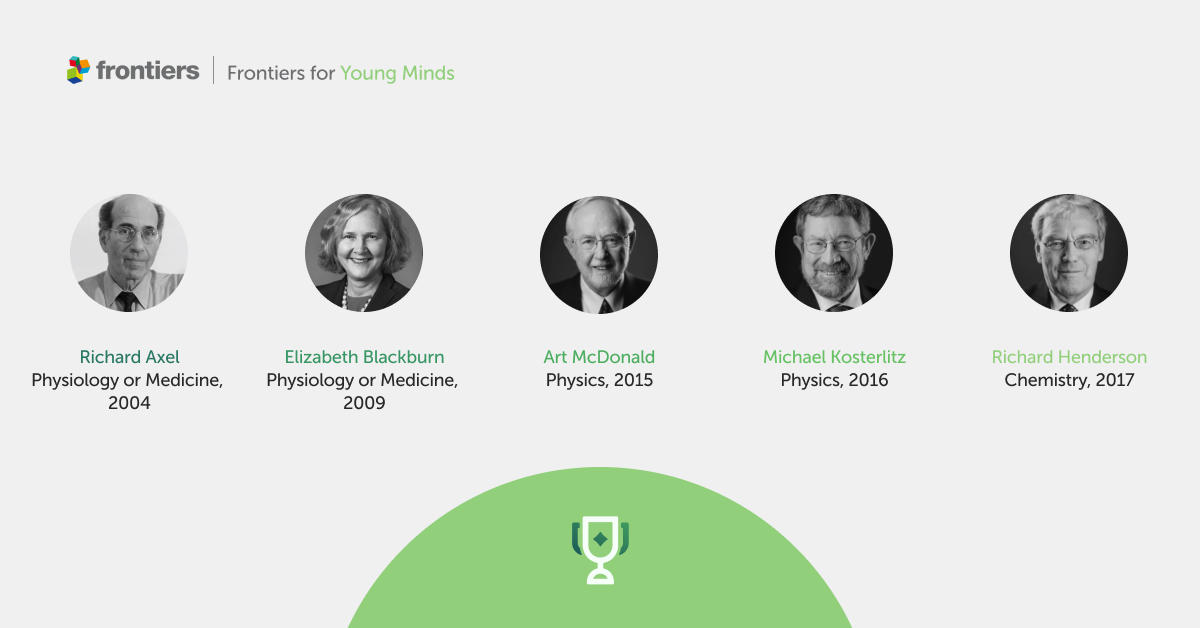Frontiers for Young Minds, a unique, completely free kids’ science journal launched its second Nobel Collection today. It features five new articles in which top scientists connected directly with young reviewers to ensure their articles are clear, educational, and fascinating to read for young people before they were published in the journal.

Photo credit: Frontiers
This is the second volume within the Nobel Collection, with articles written by Nobel Laureates and reviewed by children aged 8 to 15. It promises to be an exciting and educational experience for both kids and adults alike. Volume 1, which is complete, already showcases 10 amazing Nobel Prize-winning authors, writing about their world-changing discoveries in fields from neuroscience to crystallography, from computer simulations to behavioral economics.
This time, highly valued Nobelists provide insights and inspiration from their amazing work on the following topics:
- The Olfactory System: It Smells Good to Be Alive, written by Richard Axel, awarded the Nobel Prize in Physiology or Medicine in 2004. How many odors (smells) in the world around you do you think you can recognize? In this article, find out how your brain recognizes different odors and why they cause different reactions in different animals and people.
- Telomere Power: How to live longer and heathier, written by Elizabeth Blackburn, awarded the Nobel Prize in Physiology or Medicine in 2009. Did you know that things you do daily – exercise, eating, even how you think – can change the very basic units within your cells? Dive into the fascinating world of telomeres, the protectors of DNA, and telomerase which maintains them, and be amazed by how environmental and social factors can affect your biology!
- Resolution Revolution – Seeing the Molecules of Life with Electron Cryomicroscopy, written by Richard Henderson (with Noa Segev), awarded the Nobel Prize in Chemistry in 2017. Did you know how powerful imaging techniques must be in order to show structural biologists the basic building blocks of life? Find out how the search for molecular structure (in humans, animals, plants and tiny microorganisms) was revolutionized by a new technique in electron cryomicroscopy, where electrons go through cooled microscope specimens.
- Defying Gravity? On The Magic Tricks of Superfluids, written by Michael Kosterlitz, awarded the Nobel Prize in Physics in 2016. Did you know that physics can solve puzzles in our world, from how the wind blows to rare and mysterious phenomena? Join a Nobel-winning journey to discover how a normal fluid is cooled down and becomes a superfluid – and the cool things it can then do!
- Neutrinos: The Ghost Particles that Make Up Our Universe – written by Arthur B. McDonald, awarded the Nobel Prize in Physics in 2015. Want to know more about how the universe started and how it works? Then you’ll need this article, featuring a breakthrough in measuring neutrino particles, a fundamental building block of the universe, and what this can tell us about how the universe has evolved since the Big Bang.
The Volume 2 series of Laureate authors will continue to grow later this year, giving young people more opportunities to understand – and ignite interest in – the biggest discoveries of our times.
Commenting on the new volume, spokesperson for Frontiers for Young Minds Laura Henderson says, “It’s amazing to see this incredible initiative continue to grow and grow. With over 100 million people seeing Volume 1 on social media, we can’t wait to see what Volume 2 will achieve. The generosity and support of our Nobelist authors mean that their extraordinary work can now be read by all young people, anywhere in the world.”
Frontiers for Young Minds journal makes science accessible to children around the world and is a great resource for anyone who wants to learn more about science and research. With articles written by Nobel laureates and reviewed by kids, it provides a unique perspective on science and how it affects our daily lives. Whether you are a child or an adult, the Collection offers a valuable and enjoyable way to explore the wonders of science.
The Nobel Collection | Volume 2 | Frontiers for Young Minds
The Nobel Collection – Volume 2. Video Credit: Frontiers